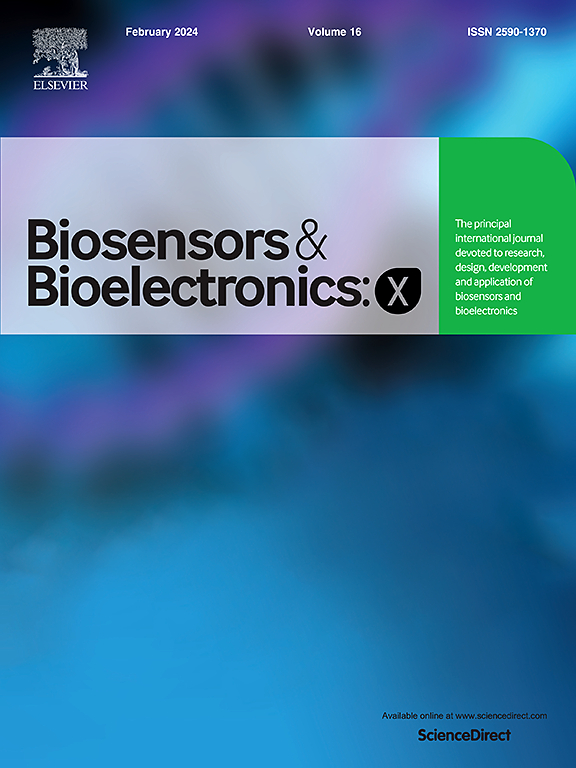MoS2-Si3N4-based SPR biosensor for the detection of malaria at different stages: A theoretical insight
IF 10.61
Q3 Biochemistry, Genetics and Molecular Biology
引用次数: 0
Abstract
The accurate differentiation of malaria stages is essential for effective treatment and epidemiological control. This work presents a theoretical analysis of a multilayer surface plasmon resonance (SPR) biosensor for malaria stage detection based on refractive index variations of infected red blood cells. The sensor combines silver, silicon nitride (Si3N4), monolayer molybdenum disulfide (MoS2), and thiol-functionalized single-stranded DNA (ssDNA) on a BK7 prism. Using the transfer matrix method (TMM), we evaluate the sensor performance across Ring, Trophozoite, and Schizont stages through sensitivity, full width at half maximum (FWHM), quality factor (QF), detection accuracy (DA), limit of detection (LoD), and comprehensive sensitivity factor (CSF). The optimized configuration achieves angular sensitivities of 318.2 (Ring), 268.9 (Trophozoite), and 244.8 (Schizont) °/RIU, demonstrating clear stage discrimination and competitive performance compared to reported multilayer SPR sensors. The layered architecture was designed with experimentally accessible materials and configurations, supporting future translation to stage-specific diagnostic platforms.
基于mos2 - si3n4的SPR生物传感器在不同阶段检测疟疾:一个理论见解
疟疾分期的准确区分对于有效治疗和流行病学控制至关重要。这项工作提出了一个多层表面等离子体共振(SPR)生物传感器疟疾阶段检测的理论分析,基于感染红细胞的折射率变化。该传感器在BK7棱镜上结合了银、氮化硅(Si3N4)、单层二硫化钼(MoS2)和硫醇功能化单链DNA (ssDNA)。利用传递矩阵法(TMM),我们通过灵敏度、半最大全宽度(FWHM)、质量因子(QF)、检测精度(DA)、检测限(LoD)和综合灵敏度因子(CSF)来评估环、Trophozoite和Schizont阶段的传感器性能。优化后的配置实现了318.2(环形)、268.9 (Trophozoite)和244.8 (Schizont)°/RIU的角灵敏度,与已有的多层SPR传感器相比,具有清晰的阶段识别和竞争力。分层架构采用实验可访问的材料和配置设计,支持未来转换为特定阶段的诊断平台。
本文章由计算机程序翻译,如有差异,请以英文原文为准。
求助全文
约1分钟内获得全文
求助全文
来源期刊

Biosensors and Bioelectronics: X
Biochemistry, Genetics and Molecular Biology-Biophysics
CiteScore
4.60
自引率
0.00%
发文量
166
审稿时长
54 days
期刊介绍:
Biosensors and Bioelectronics: X, an open-access companion journal of Biosensors and Bioelectronics, boasts a 2020 Impact Factor of 10.61 (Journal Citation Reports, Clarivate Analytics 2021). Offering authors the opportunity to share their innovative work freely and globally, Biosensors and Bioelectronics: X aims to be a timely and permanent source of information. The journal publishes original research papers, review articles, communications, editorial highlights, perspectives, opinions, and commentaries at the intersection of technological advancements and high-impact applications. Manuscripts submitted to Biosensors and Bioelectronics: X are assessed based on originality and innovation in technology development or applications, aligning with the journal's goal to cater to a broad audience interested in this dynamic field.
 求助内容:
求助内容: 应助结果提醒方式:
应助结果提醒方式:


